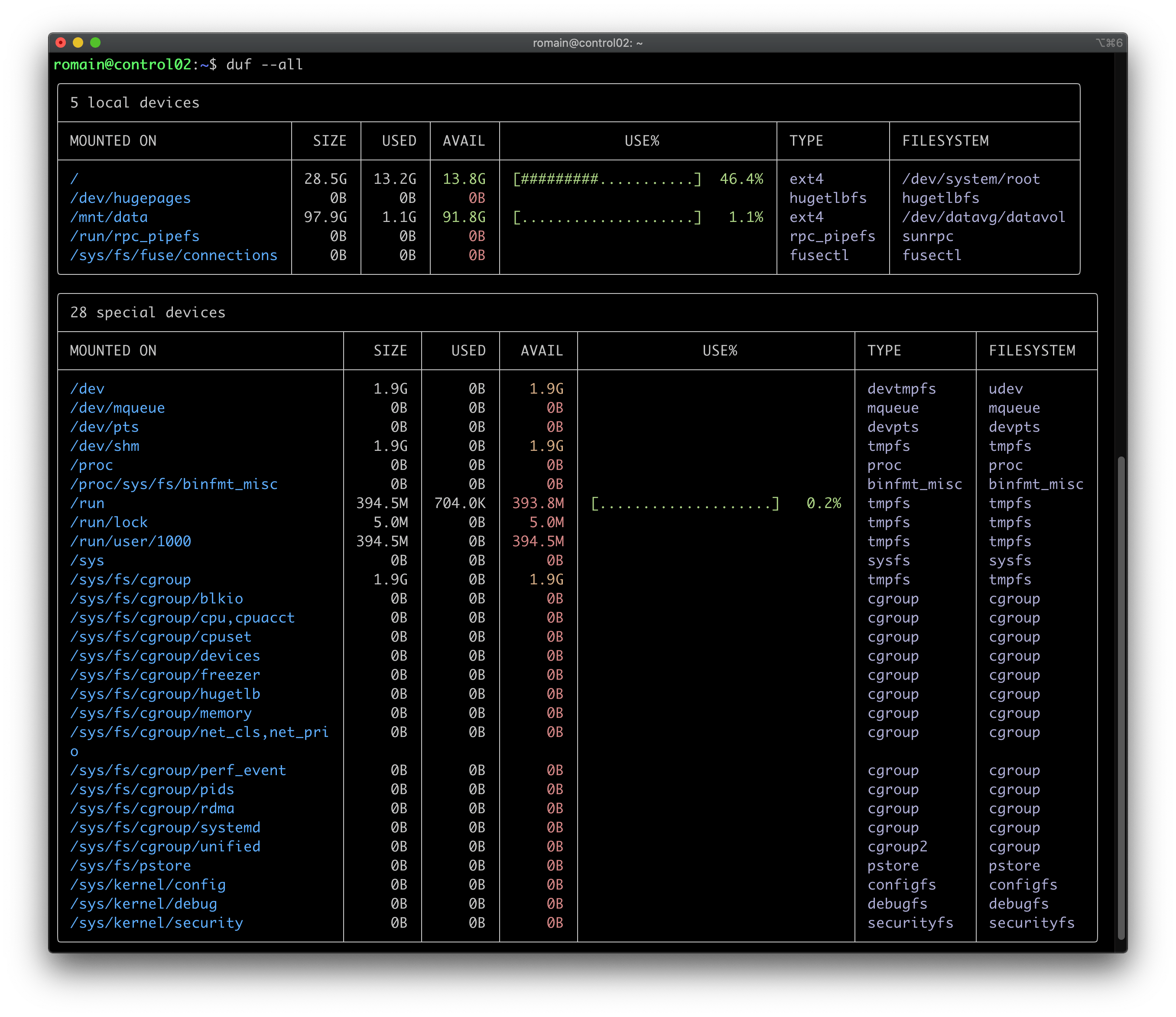One of the first Linux/UNIX command-line I learned 20 years ago was du: du stands for disk usage, and is widely used to estimate file space usage (either for a complete system, for a partition, for a folder or for individual files).
Duf is another CLI tool to display disk usage details, but that time with a user-friendly layout (in a table format) that automatically adjusts to your terminal’s width.

As you can see in the output above, this command line lists the following details:
- mounted devices (and associated mount point)
- total size, used and free disk soace for each partitions
- filesystem type and name
Developed in Go, duf is available available for Linux, macOS and Windows and has some nice embedded features:
- sort the results according to your needs (by mountpoint, size, used space, inodes, etc.)
- groups & filters devices
- show/hide specific information or columns
- output the disk space in JSON format
You can also list inode information instead of block usage with duf --inodes.

























